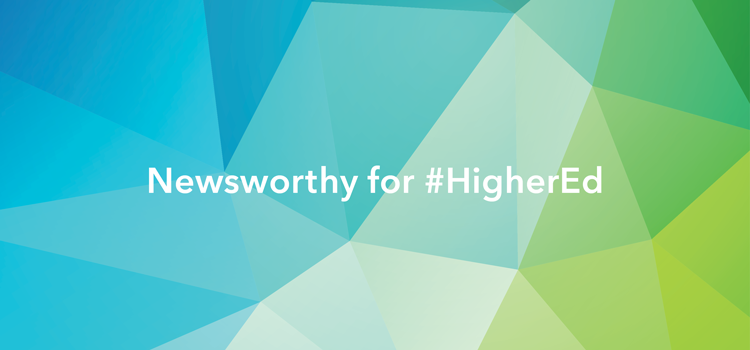Is a COVID-19 Pivot Needed in Higher Education (and For Those Who Serve It)?
Former Tambellini Analyst

I’ve spent a lot of time over the last few weeks thinking about what, if any, long-term impact the COVID-19 experience will have on our lives and expectations, broadly, and on higher education, specifically. I suspect many of us have.
How long will this pandemic continue? Will we return to ‘normal’ at some point, or will some of the requirements put into place, like physical distancing, become part of our ‘new normal’ for the foreseeable future? Even if restrictions lessen, will the practices we’ve adopted during the pandemic change our behaviors and expectations following it?
The answer, of course, is that no one truly knows.
There is value in exploring each of these questions (and others), and potential scenarios and outcomes related to them. In particular, it would behoove institutions and organizations alike to consider the last question: what behaviors and/or expectations might change as a result of the pandemic experience? This is the perfect time to take a human-centered approach to designing—or redesigning—your processes, services, solutions…maybe even your business model.
Here are a couple things I’ve noticed about my own COVID-19 experiences to date:
- Not all online shopping experiences are created equally. I’ve always been a heavy online shopper, but not for everything. I’ve increased online shopping significantly—for groceries, Easter treats for the kiddos, quarantine distractions. There is a clear difference in the quality of these interactions, from the connection to real-time information about product stock to the ability to know if a delivery window is available and select one—even if it’s multiple days out—in the process.
- Different modes of distribution/delivery are possible. I’ve been impressed with how quickly our local school district converted its existing bus route to deliver meals to those students who are eligible for low and no-cost lunches. A number of local retailers are now offering curbside/trunk deliver (eg, you pull up, they put the items in your trunk), and my pharmacy just texted “your Rx is ready for pickup, skip a trip to the pharmacy with FREE delivery.” This may have been possible before, but they certainly weren’t promoting it. Now I can’t imagine making a trip to the pharmacy again.
- My children are all enjoying self-paced learning. Each for his or her own reason, but all have said that they like—even prefer—the ability to study and work at their own pace and time. Of course, they miss their friends too, but it makes me want to shout “watch out” to future K-12 and higher education institutions. Student preferences are likely to be very different coming out of this crisis. Is this a genie we can, or even should, put back in the bottle?
What can we learn from these (admittedly personal) experiences?
I’ll bet that retailers who want to ‘win’ in the future will connect their inventory management system with their point-of-sale system and serve customers online with real-time information about what’s in stock, and where (and connect in their supply chain for an even fuller picture). More emphasis will be placed on having an omnichannel presence with a consistent user experience, predictive analytics to anticipate demand, and multiple delivery options based on customer preference or needs.
While many retailers have components of this today, it’s fairly fragmented even from the same retailer—product availability is not always accurate (and mostly cannot predict what’s coming), some products can be shipped while others can only be picked up and/or delivered, and one prominent retailer has multiple pathways to product delivery, with some products available through one pathway, and others available through another. As a consumer, it’s extremely frustrating.
There are some striking similarities between these inconsistent retail experiences and those across a university. Some areas or services are delivered online or via a mobile app in near real time, others are accessed in entirely different ways and timeframes. Some manual, paper-based processes, others digital. Lack of real-time data. Courses based more on supply (what faculty want to teach) than on demand (what students need/want to take).
Through this pandemic we’ve also learned that the ability to be agile and flexible, and scale quickly, has helped some businesses quickly pivot to meet the market’s and their customers’ needs during this difficult time.
Higher education institutions have been remarkably agile during this time, as they’ve quickly moved their courses online. But as many have been quick to point out, this was an exercise in business and teaching continuity, not a wholesale shift in how institutions operate. As we look to the future, will institutions be able to apply this same level of agility and flexibility to their operating model?
Given our students’ recent experiences, and the still unknown state of the coronavirus, what can we expect in the fall semester and beyond? Perhaps we will see more four and six-week courses offered sequentially, rather than four-course, 16-week semesters. I also wonder if institutions will look at more blended and/or low-residency programs, making the best use of both online and in-person learning while creating some level of flexibility to ensure proper physical distancing, should it be needed in the future.
And what might this mean for those companies who support and serve higher education? There are really two dimensions for these businesses to consider.
- Your own business. What services and/or solutions of your own need redesigning, in light of this pandemic experience? We’ve seen a strong need for an accessibility-first and security-first approach to online teaching and learning tools, for starters. Then there’s the question of scalability, distribution models…and what about fragmented user experiences? I have worked with my share of higher ed vendors over the years who’ve struggled with this. As we can see so clearly from some companies right now, even with all the same basic capabilities (e.g., online shopping), some services are much more robust and easier to use than others, and some companies much more delightful to engage with than others.
- The ‘business’ of higher education. Higher ed vendors should also consider what lessons institutions will take away from this experience. Do your products and services currently enable a redesign that institutions may need to make? Or perhaps there’s an opportunity or need to pivot—shifting your strategy, bringing a new product to market, or even adapting your business model to provide institutions with the right software, service, or solution, at the right time, to enable (or even shape) the post-coronavirus higher education experience…whatever that might be.
While no one can predict what the long-term impact or outcome from coronavirus will be, most everyone can agree that it will create some level of change. Those in the higher education ecosystem can take a ‘wait and see’ approach to this change…or start imagining a new future and leading it.
Originally posted April 7, 2020, as a LinkedIn Article. Reprinted with permission.
Categories
Share Article:

Other Posts From this Author:
© Copyright 2025, The Tambellini Group. All Rights Reserved.